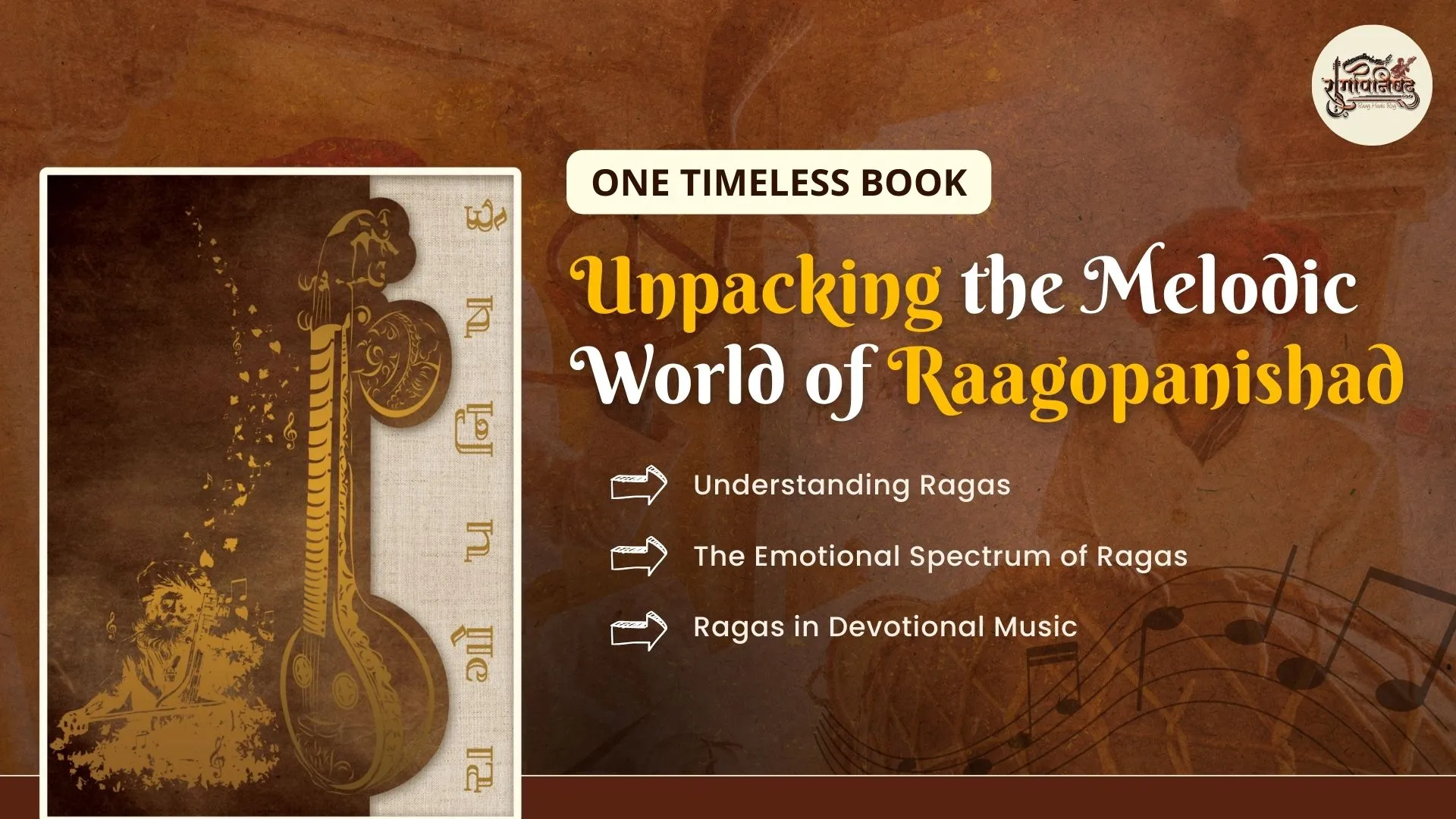
Indian classical music, with its rich tapestry of melodies and emotions, holds a significant place in the realm of devotional practices. The Raagopanishad, a compilation of Jain stavan and stotra, beautifully exemplifies this connection by utilizing specific ragas to enhance the spiritual experience. This blog post aims to delve into the fascinating world of ragas within the context of Jain devotional music, shedding light on their structure, and emotional associations.
Understanding Ragas: The Building Blocks of Indian Classical Music
At the heart of Indian classical music lies the concept of ragas, which are melodic modes that serve as the foundation for improvisation and composition. Each raga possesses a unique scale, a set of characteristic phrases, and a specific emotional flavor known as rasa. Ragas are not merely a collection of notes; they are imbued with a distinct personality that can evoke a wide range of emotions in both the performer and the listener.
The structure of a raga is typically divided into two main sections: the alap and the bandish. The alap is an improvisational introduction that explores the raga's melodic essence without any rhythmic accompaniment. It allows the musician to gradually unfold the raga's nuances, establishing its mood and character. The bandish, on the other hand, is a fixed composition that incorporates a specific melody, rhythm, and lyrics. It serves as a framework for further improvisation and elaboration within the boundaries of the raga.
The Emotional Spectrum of Ragas: Evoking Rasas
One of the most captivating aspects of ragas is their ability to evoke specific emotions or rasas. The concept of rasa is central to Indian aesthetics, encompassing a range of human emotions such as love, joy, sorrow, anger, and peace. Each raga is associated with one or more rasas, allowing musicians to create a profound emotional connection with their audience.
For instance, ragas like Bhairavi and Todi are often associated with devotion and introspection, making them suitable for prayers and contemplative practices. Ragas like Yaman and Kalyan, on the other hand, exude a sense of joy and celebration, making them appropriate for festive occasions. The skillful use of ragas enables Jain devotional music to create an immersive and emotionally resonant experience for the listeners.
Ragas in Devotional Music: A Harmonious Blend
Devotional music, known for its soul-stirring melodies and profound lyrics, beautifully integrates the concept of ragas to enhance the spiritual atmosphere. The Raagopanishad, comprises a collection of stavan and stotra set to various ragas. These devotional compositions serve as a medium for expressing reverence, gratitude, and devotion towards the Tirthankaras, the enlightened beings who have conquered the cycle of birth and death.
The selection of ragas in devotional music is not arbitrary; it is carefully curated to align with the emotions and sentiments expressed in the lyrics. For example, the stavan dedicated to Lord Mahavira, the 24th Tirthankara, may be set to a raga that evokes valor, compassion, or renunciation, reflecting his exemplary qualities. Similarly, stotras praising the virtues of non-violence or the importance of self-discipline may be composed in ragas that inspire peace, tranquility, or determination.
Exploring Specific Ragas in the Raagopanishad
The Raagopanishad features a diverse range of ragas, each contributing its unique flavor to the devotional compositions. While a comprehensive analysis of all the ragas is beyond the scope of this blog post, let us explore a few notable examples:
- Ramkali This morning raga is known for its gentle and serene nature. It is often used in stavan that express gratitude and reverence, creating an atmosphere of tranquility and devotion.
- Bhairav This raga is characterized by its powerful and intense mood. It is frequently employed in stotra that extol the virtues of the Tirthankaras, highlighting their strength, courage, and spiritual prowess.
- Todi This raga is associated with deep emotions, ranging from pathos to devotion. It is commonly used in stavan that express remorse for one's transgressions or seek forgiveness, evoking a sense of humility and repentance.
- Yaman his raga is known for its joyful and celebratory character. It is often employed in stotra that describe the auspicious events in the lives of the Tirthankaras, such as their birth or enlightenment, creating an atmosphere of festivity and reverence.
- Kalyan This raga is associated with auspiciousness and prosperity. It is frequently used in stavan that invoke blessings or express gratitude for divine grace, fostering a sense of hope and well-being.
Conclusion: The Melodic Bridge to Divinity
The ragas of Raagopanishad serve as a melodic bridge that connects the listener to a deeper, more immersive musical experience. They elevate emotions, enhance mindfulness, and create an atmosphere of reflection and connection. With its rich heritage of ragas and compositions, this music continues to inspire and uplift countless individuals on their artistic journey.
By understanding the structure, emotional associations, and significance of ragas, we can gain a deeper appreciation for the profound role of music in personal and cultural expression. The next time you listen to a carefully crafted melody, take a moment to appreciate the intricate patterns and the emotions they evoke. Allow yourself to be transported to a realm of musical harmony, where the ragas of Raagopanishad create a seamless blend of sound and sentiment.
Are you ready to crack the code concealed in the ragas?